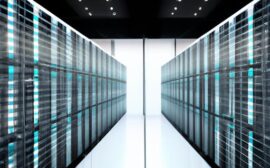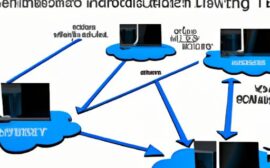Introduction
In the ever-evolving landscape of technology, the debate between on premises vs cloud computing continues to be at the forefront of discussions. But what exactly do these terms mean? Let’s break it down. On premises computing refers to the traditional model where all hardware and software are located within the physical premises of an organization. On the other hand, cloud computing involves accessing and storing data and applications over the internet, eliminating the need for on-site infrastructure.
The disparities between on premises and cloud solutions are vast and impactful. While on premises offers complete control and customization, it comes with a hefty price tag and maintenance requirements. Conversely, cloud solutions provide scalability, flexibility, and cost-effectiveness, but may raise concerns regarding data security and control. Understanding these variances is crucial in determining the best fit for your business needs. So, let’s delve deeper into the intricacies of on premises vs cloud computing to navigate through this technological maze.
Cost Comparison
Breakdown of Costs
When considering on premises vs cloud solutions, one of the most critical factors to evaluate is the cost implications. On premises solutions typically involve significant upfront investments in hardware, software, and infrastructure. These costs can be substantial, especially for small to medium-sized businesses with limited resources. Additionally, ongoing maintenance fees, upgrades, and IT support can further escalate the total cost of ownership for on premises solutions.
In contrast, cloud solutions offer a more flexible pricing structure, often based on a pay-as-you-go model. This means that businesses only pay for the resources they use, providing cost savings and scalability. The ability to scale resources up or down based on demand allows businesses to optimize costs and adapt to changing needs swiftly. By analyzing the total cost of ownership, including upfront costs, maintenance fees, and scalability, organizations can make informed decisions on whether on premises or cloud solutions align better with their financial objectives.
Scalability and Flexibility
Evaluating Scalability
When it comes to scalability, the difference between on premises and cloud solutions is like night and day. On premises infrastructure requires careful planning and investment in hardware to accommodate future growth. Scaling up can be a time-consuming and costly process, involving the purchase of additional servers, storage, and resources. On the contrary, cloud solutions offer a level of scalability that is unmatched. With the ability to instantly adjust resources based on demand, businesses can quickly scale up or down without the need for significant upfront investments.
Exploring Flexibility
Flexibility is a key component of modern business operations, and it plays a significant role in the on premises vs cloud debate. On premises solutions often lack the agility and adaptability that cloud solutions provide. The rigid nature of on premises infrastructure can hinder innovation and hinder the ability to respond to changing business needs. Cloud solutions, on the other hand, offer unparalleled flexibility. With the ability to access resources on-demand and easily integrate new services, businesses can quickly adapt to market fluctuations and stay ahead of the competition.
Conclusion
As we wrap up our exploration of on premises vs cloud computing, it becomes evident that each solution offers unique advantages and challenges. The scalability and flexibility of cloud solutions provide businesses with the ability to adapt to changing demands quickly, while on premises solutions offer unparalleled control and customization. However, the security considerations of both options must not be overlooked, as data privacy and compliance issues play a crucial role in decision-making.
In the dynamic realm of technology, the choice between on premises and cloud solutions ultimately hinges on your organization’s specific needs and priorities. By weighing the cost, security, scalability, and performance aspects of each solution, you can make an informed decision that aligns with your business objectives. Whether you opt for the reliability of on premises or the agility of the cloud, remember that the key to success lies in understanding and leveraging the strengths of each approach. Embrace the digital transformation with confidence and strategy, knowing that the right choice awaits at the intersection of on premises vs cloud computing.



